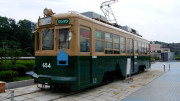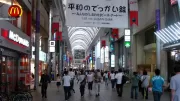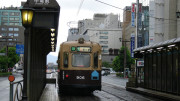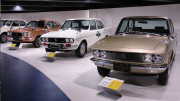The Hiroshima Peace Memorial (often called the Atomic Bomb Dome or A-Bomb Dome) is one of Hiroshima’s most recognized landmarks and has become a symbol of the destructive power of the world’s first atomic bomb.
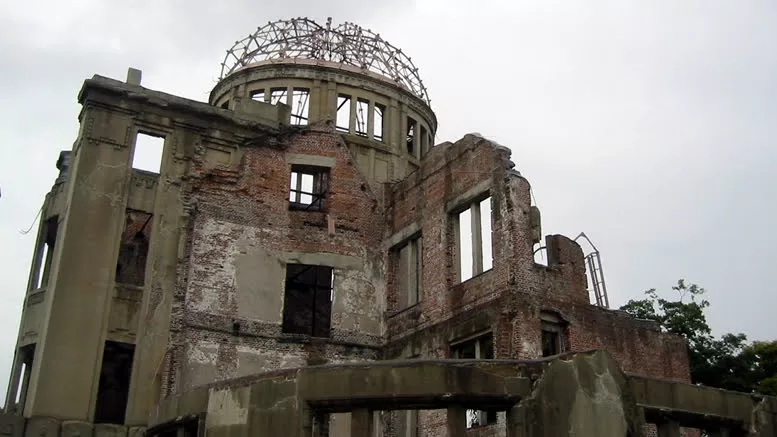
Opened in 1915 as the Hiroshima Prefectural Commercial Exhibition Hall, the building was renamed the Hiroshima Prefectural Products Exhibition Hall in 1921 and later became the Hiroshima Prefectural Industrial Promotion Hall in 1933. The A-Bomb Dome sits on the edge of Hiroshima’s Peace Memorial Park and serves as the focal point of the park’s memorials.
The original target for the bomb was a nearby T-shaped bridge, but the bomb missed its target, detonating approximately 150 metres directly above the dome. Built from reinforced concrete, it was one of only a handful of buildings to survive the blast, while the majority of the city’s wooden buildings were completely obliterated, leaving little trace of their existence.
After the war, the building was quickly nicknamed the A-Bomb Dome (or Genbaku Dōmu in Japanese) and was initially planned for demolition along with much of Hiroshima’s half-damaged structures. However, in 1966, the city decided to preserve the ruins as a memorial to the thousands who perished in the explosion.
The A-Bomb Dome is one of only two pre-war buildings still standing in the Peace Memorial Park. Another survivor is the Rest House, originally built as a kimono shop in 1929. Although much of its interior was burned out by the blast, it was later restored and remains in use today.
Other notable pre-war buildings in Hiroshima include the Honkawa Elementary School Peace Museum, located across the river from the Peace Park, where part of the former school has been preserved as a museum for students to learn about peace. In the city centre, the former Bank of Japan Building, which suffered minimal damage, has been repurposed as an art gallery.
The A-Bomb Dome is located in Hiroshima’s Peace Memorial Park, just a short walk across the river from the city centre. It is easily accessible and stands as a powerful reminder of the past, encouraging reflection and a commitment to peace.

